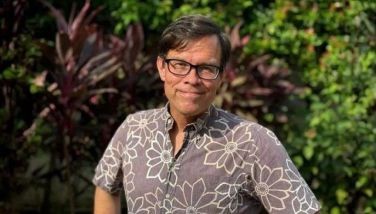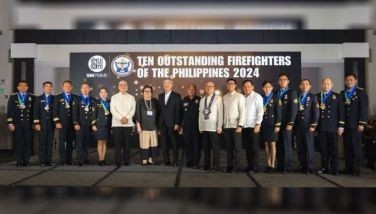Easing hunger

You are what you eat.
And if you’re not eating properly, it shows.
As nutritionists will tell you, it’s the quality, not quantity of food that counts. Obesity is a form of malnutrition. The human body needs sufficient, balanced amounts of nutrients for optimum physical and mental development.
It’s a testament to the continuing prevalence of poverty in our country that physical and mental stunting and wasting are serious problems.
Official data show that nearly 27 percent of Filipino children under five are stunted; the figure is a staggering 45 percent in the Bangsamoro Autonomous Region in Muslim Mindanao (BARMM). Nationwide, approximately 43 percent of children aged six to 12 suffer from iron deficiency anemia.
In poor households, malnutrition starts at conception, with the undernourished mother. Breastfeeding can make up for it; I know a baby from a low-income family who was born thin but grew into a baby with Buddha-like girth in no time from being breastfed.
Not all women, however, have enough breast milk. This is true particularly of malnourished mothers. Baby formula and high-nutrient baby feed can compensate for the nutrient deficiency, but these products are too expensive for millions of families in this country.
The government has launched several programs to boost early childhood nutrition, through school feeding programs wherein the food ingredients such as agricultural commodities are locally sourced. This in turn helps the local community.
Worldwide, however, programs to enhance food security have been affected by crisis after crisis, from climate change to the COVID pandemic and Russia’s invasion of Ukraine, which wreaked havoc on supply chains, and now the conflict between Israel and Hamas.
* * *
The United Nations World Food Program is feeling the impact. The WFP is a key Philippine partner in the uphill battle versus hunger and malnutrition.
For a food-insecure country like ours where people are heavily dependent on ayuda and outside help, the impact of multiple global crises on foreign aid should be a cause for concern.
Last Monday I sat down for an interview with WFP Executive Director Cindy McCain, who was in Manila for the Asia and the Pacific Food Security Forum of the Asian Development Bank. The forum aims to tackle the worsening food security problem in the region.
McCain, who met Monday with President Marcos at Malacañang, expressed appreciation for Manila’s “great support” (the Philippines is the third biggest donor to WFP in-country programs) and the government’s efforts to address food security issues.
But during our interview, McCain also expressed concern about increasing “donor fatigue,” whose impact is being felt not only by the WFP but also other UN agencies as well as nongovernment organizations.
WFP funding, McCain told me, “is down by half” since last year.
“The donor climate right now has changed,” said McCain, a former permanent representative of the United States mission to the UN Agencies in Rome, who took the helm of the WFP last year. “We’re all in the same boat.”
She noted that the world is dealing with such an “overwhelming” number of crises in a lot of places right now that “we don’t even know where to begin.”
“It’s very complicated right now, the world is very complicated,” she said.
* * *
Governments can no longer do it alone, she pointed out, so the WFP is hoping that the private sector will step in. She is happy to note that the WFP is seeing this happening.
How has this affected WFP programs in the Philippines? The strong partnership between the WFP and the government is allowing programs to be sustained, McCain said.
With her during the interview was the WFP’s country director, Dipayan Bhattacharyya, who provided some information about WFP-supported initiatives in the Philippines such as the food voucher and food stamp programs under the Walang Gutom 2027 and nutribun project.
The WFP helps the country in capacity building, program development and efficient implementation. These include the promotion of a circular economy and climate-smart agriculture as well as support in food logistics and emergency telecommunications.
It has an extensive presence in the Philippines, which ranked 67th out of 112 countries in the 2022 Global Food Security Index.
The WFP also has programs to address the impact on food security of climate change and armed conflict such as in the BARMM, still the country’s poorest region. For 2024 to 2028, the WFP’s strategic plan for the Philippines focuses on crisis response and integrated resilience building in relation to food security.
With donor fatigue and so many other places with far worse problems than the Philippines, our country could go down in the totem pole of priorities of multilateral aid agencies like the WFP.
McCain, the widow of US senator John McCain, indicated this would not happen – or at least the WFP will try not to make it happen.
The WFP’s job, she said, is to address hunger and keep alive not only people in places that are going through major crises, but also “other places like the Philippines that are doing much better.”
“We want to keep that on track, too, so that we do progress,” McCain told me.
This is best achieved if the country can boost its own efforts and capacities for food security and climate resilience.
- Latest
- Trending



























